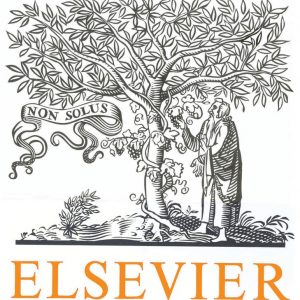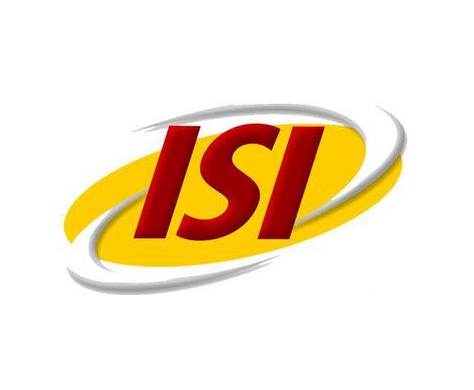دانلود رایگان مقاله لاتین ارزش مشتری و ارتباط خواص Dyadic از سایت الزویر
عنوان فارسی مقاله:
برنامه های ارجاع، ارزش مشتری و ارتباط ویژگی های Dyadic
عنوان انگلیسی مقاله:
Referral programs, customer value, and the relevance of dyadic characteristics
سال انتشار : 2015

برای دانلود رایگان مقاله ارزش مشتری و ارتباط خواص Dyadic اینجا کلیک نمایید.
بخشی از مقاله انگلیسی:
3. Replication analyses and results
As in the original study, we first purified the data using the DFBETA criteria and eliminated extreme data points that might excessively influence the results.3 Consequently, we deleted 140 referred and 220 non-referred customers. To replicate the analysis of the churn behavior of referred versus non-referred customers, we estimate a Cox proportional hazard model. The results in Table 2 indicate that customers acquired through rewarded referrals indeed show a lower risk of customer churn (‒ 0.195; p < 0.01). In line with SSV, this finding demonstrates that referred customers are more loyal. >>> Insert Table 2 about here <<<Furthermore, we followed SSV’s approach and calculated two measures of customer value in addition to the daily contribution. While the observed customer value shows the present value of all contribution margins during the observation period, the customer lifetime value (CLV) captures the present value of the observed and predicted contribution margins (see SSV, p. 49- 50, for details). The regression models show interesting results: whereas SSV found an overall positive impact, our results point in the opposite direction and show a negative effect for customers acquired through rewarded referrals regarding the daily contribution margin (‒ 107.3; p < 0.01), the observed customer value (‒ 37,415.0; p < 0.01), and the CLV (‒ 58,440.5; p < 0.01). Similar to SSV, however, the size of the value differential varies across high- and low-margin customers. The segment-specific results in Table 3 indicate that for lowmargin customers, rewarded referrals attract customers with higher CLV (12,033.7; p < 0.01) while the effect for high-margin customers is negative (‒ 196,264.4; p < 0.01).4 >>> Insert Table 3 about here <<< Considering the higher loyalty of referred customers, these findings confirm SSV’s results and indicate that referred customers indeed have the potential to become more valuable customers. However, there is a need for a deeper look into potential causes for the differing results regarding the CLV. The product portfolio of the focal bank consists of a variety of products that differ substantially with respect to their profit margin. While simple products such as checking accounts contribute little to the customer value, mortgages in particular are highly profitable although less frequent. While, for instance, only 4.8% of all customers in our sample had mortgages, the share among the high-margin customers is 14.0%. We find a significant difference between referred and non-referred customers. Whereas among the non-referred customers 6.9% are mortgage customers, only 3.0% are found among the referred customers (t = 3.91; p < 0.01), leading to the significantly higher CLV of non-referred customers in this segment. At the same time, we find substantially higher CLVs for referred compared with nonreferred customers in the bottom decile where there are no mortgage customers at all. This observation is in line with previous findings. According to Ryu and Feick (2007), customers are less likely to refer risky products (as in the case of complex and high-volume mortgages). At the same time, because only a small share of customers has experience with mortgage products with the bank, both the willingness to refer such a product and the willingness to accept a referral are lower. In our sample, the likelihood of a non-mortgage customer to refer a mortgage customer is 2.2%, which is four times lower than a referral from a mortgage customer (9.0%). Even if customers have such experience and are willing to make a referral, they would need to have similar friends in their network that are interested in a mortgage contract. We tested whether customers refer the product to customers that are similar to themselves. We operationalize demographic similarity as the percentage of similar characteristics between the sender and the receiver of referrals. Following Nitzan and Libai (2011), we use the sociodemographic variables such as age5 , gender, income and neighborhood as well as web and call center use to calculate a score. The score indicates the similarity of sender and receiver in the range from 0 (not similar) to 1 (very similar). A positive influence of demographic similarity implies that the higher the sender’s CLV, the higher the CLV of the receiver.
برای دانلود رایگان مقاله ارزش مشتری و ارتباط خواص Dyadic اینجا کلیک نمایید.
کلمات کلیدی:
7 Referral Program Best Practices For Wooing Customers - Influitive https://influitive.com/blog/7-referral-program-best-practices-for-wooing-customers/ May 18, 2017 - 7 Referral Program Best Practices For Wooing Customers ... is faster than those without, and 59% report a higher customer life-time value. Why Customer Referrals Can Drive Stunning Profits https://hbr.org/2011/06/why-customer-referrals-can-drive-stunning-profits For companies wondering whether their referral programs are accomplishing ... value between referred and nonreferred customers is among young people. 7 Surprising Stats about Customer Referral Programs https://www.referralsaasquatch.com/7-surprising-stats-about-customer-referral-progra... Sep 4, 2013 - If you already have a customer referral program and it's not performing like you ... The LifeTime Value of a new referral customer is 16% higher ... Searches related to Referral programs, customer value referral journal meaning why customer referrals can drive stunning profits effectiveness of referral programs impact of referral programs harvard business review referrals why customer referrals can drive stunning profits harvard business review why customer referrals are important referral research
